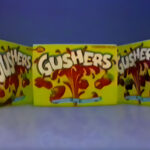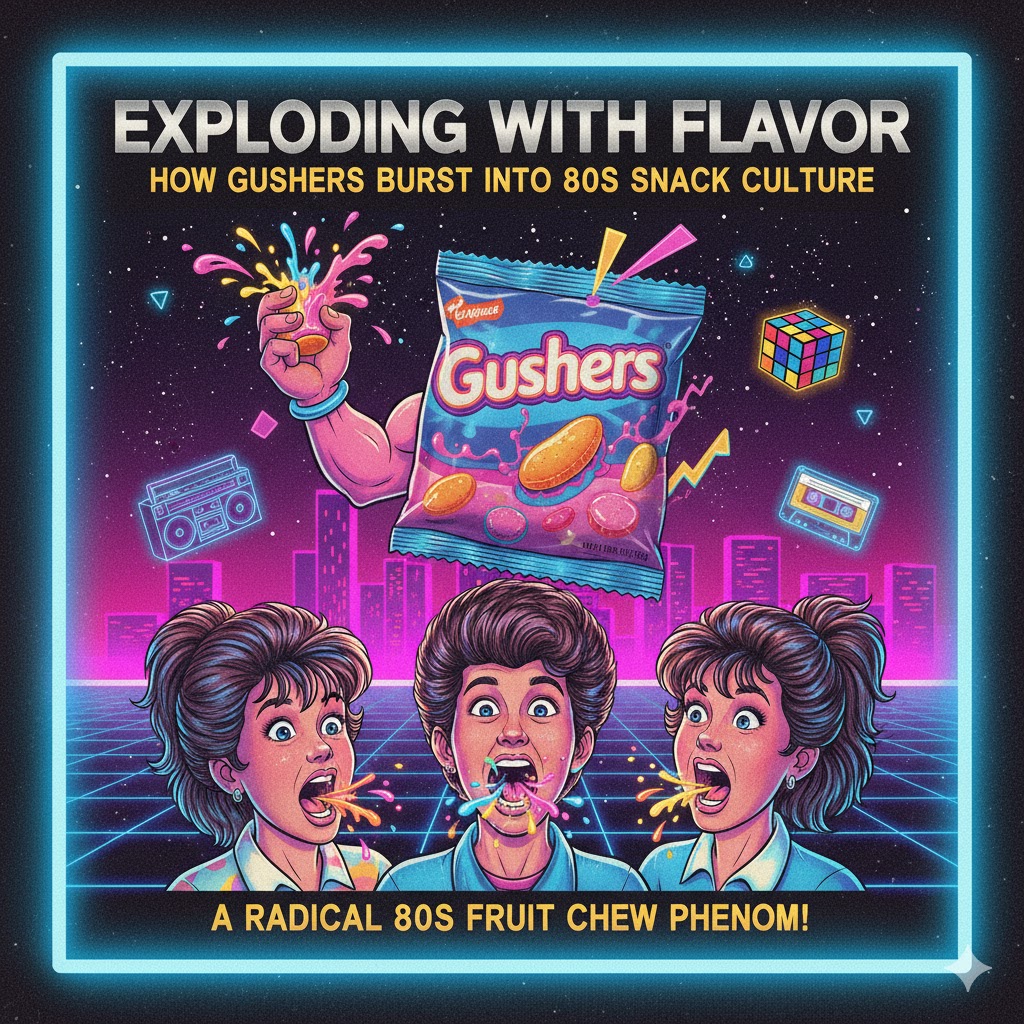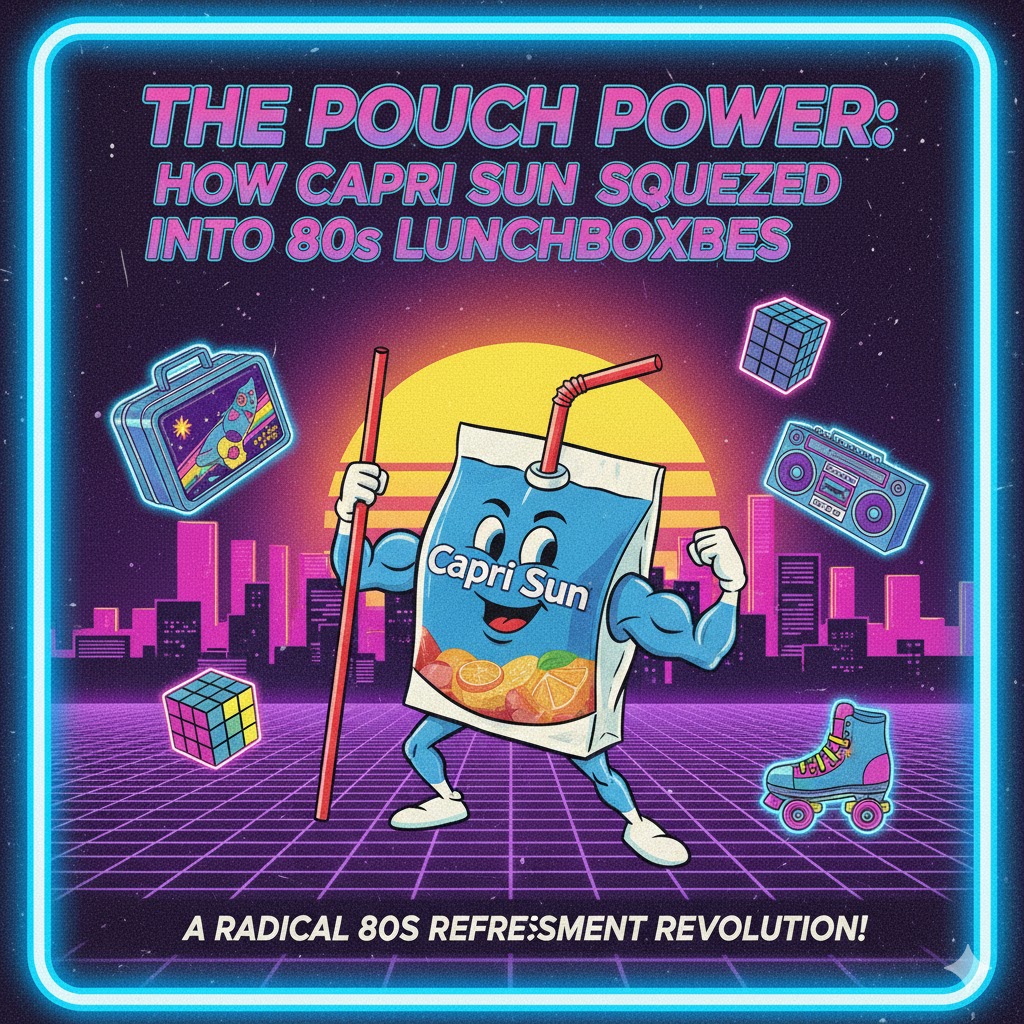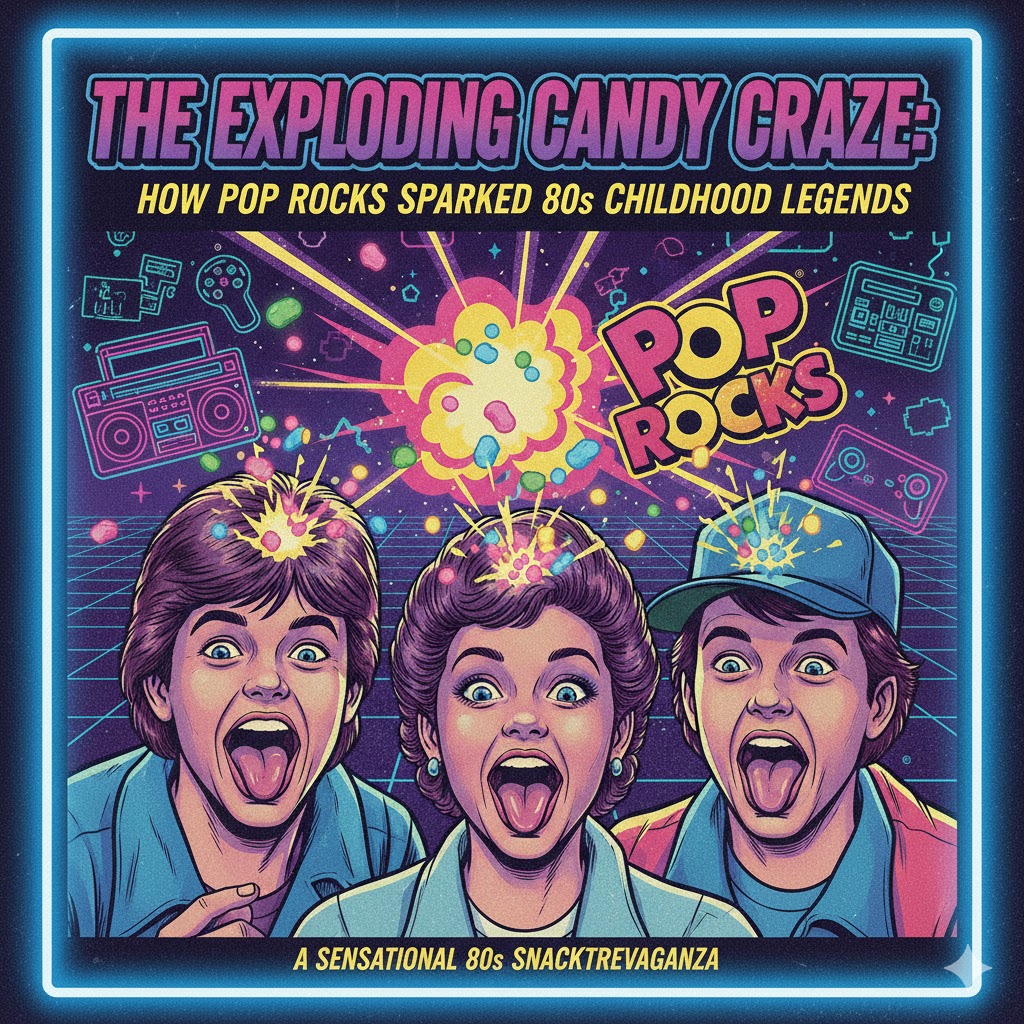 The 1980s were a time of bold flavors, vibrant colors, and snack innovations that captured the imagination—and taste buds—of a generation of kids. Among the most memorable treats of the decade was Gushers, a fruit snack that combined chewy textures with liquid-filled centers to create an explosion of flavor with every bite. Launched in the late 1980s by General Mills under the Betty Crocker brand, Gushers quickly became a cultural phenomenon, leaving an indelible mark on the snack landscape and 1980s pop culture at large. The candy’s playful design, innovative texture, and marketing appeal transformed it from a simple snack into a multi-sensory experience that defined recess, lunchboxes, and after-school indulgences for millions of kids.
The 1980s were a time of bold flavors, vibrant colors, and snack innovations that captured the imagination—and taste buds—of a generation of kids. Among the most memorable treats of the decade was Gushers, a fruit snack that combined chewy textures with liquid-filled centers to create an explosion of flavor with every bite. Launched in the late 1980s by General Mills under the Betty Crocker brand, Gushers quickly became a cultural phenomenon, leaving an indelible mark on the snack landscape and 1980s pop culture at large. The candy’s playful design, innovative texture, and marketing appeal transformed it from a simple snack into a multi-sensory experience that defined recess, lunchboxes, and after-school indulgences for millions of kids.
Gushers were revolutionary for their time because they offered something that most snacks didn’t: a dual sensory experience. The chewy exterior combined with the liquid core created a burst of flavor, engaging both the sense of taste and the surprise of texture. This unique feature made Gushers more than just candy—they were a mini adventure in every bite. Children didn’t just eat them; they experienced them. This novelty factor was crucial to the snack’s early popularity and helped cement its place in the cultural lexicon of the 1980s. Each gusher, whether filled with strawberry, cherry, or later tropical flavors, provided an element of anticipation, delight, and sensory experimentation that resonated deeply with children.
The branding and marketing of Gushers played a major role in their impact on 1980s pop culture. Bright, colorful packaging featured cartoonish depictions of fruits bursting with juice, emphasizing the fun, playful, and slightly messy nature of the snack. Television commercials targeted children directly, often highlighting exaggerated reactions to the candy’s “exploding” flavor, creating an aspirational and exciting image. The marketing approach made Gushers not just a treat to eat, but a fun, almost interactive experience. Children were encouraged to share their excitement with friends, enhancing the social dimension of the snack and embedding it into the routines of playgrounds, classrooms, and birthday parties.
Gushers also reflected broader trends in the 1980s snack industry, particularly the era’s emphasis on novelty, convenience, and portability. The individually packaged portions made Gushers an ideal snack for lunchboxes, school events, or after-school activities. Unlike traditional candy bars or gum, Gushers offered a mess-free, pre-portioned, and easy-to-distribute treat that fit seamlessly into the busy routines of children and families. The convenience factor amplified their cultural reach, making them a staple in households across the country and a recognizable part of everyday childhood experiences.
The flavor innovation of Gushers contributed significantly to their cultural resonance. The liquid center provided a sensory surprise that differentiated them from other fruit snacks and candies on the market. Children quickly learned to anticipate the burst of juice inside each chew, creating a sense of excitement and repeat engagement. This interactive eating experience was not just satisfying—it encouraged curiosity and playful experimentation. Kids would often compare flavors, guess the taste before biting, or even create playful stories about the “exploding fruit” inside, integrating the snack into imaginative play.
Gushers’ visual appeal also reinforced their popularity. The brightly colored snacks mirrored the neon, high-energy aesthetic that permeated 1980s media, fashion, and entertainment. Just as cartoons, arcade games, and posters of the era used bold, eye-catching designs, Gushers leveraged vibrant hues and whimsical shapes to attract attention. This alignment with contemporary visual culture helped make the snack feel inherently modern and exciting, further embedding it within the pop-cultural identity of the decade.
The social and communal aspects of Gushers played a critical role in their cultural significance. Sharing snacks has always been a social ritual, and Gushers encouraged this behavior through their convenient packaging and playful design. Children would trade flavors, debate favorites, or even engage in playful challenges to see who could “guess the flavor” or finish a pack the fastest. These interactions reinforced friendships, encouraged negotiation and turn-taking, and fostered a sense of belonging through shared consumption. Gushers were more than candy—they were tools for social bonding and shared experience.
Gushers also intersected with other forms of 1980s pop culture. Many snack brands of the era tied themselves to television programs, cartoons, or pop music, creating multi-platform engagement. While Gushers initially stood on their own merits as a unique sensory experience, their packaging and promotional campaigns reflected the era’s fascination with animated characters, exaggerated reactions, and playful storytelling. The candy became part of a broader cultural ecosystem, where children’s entertainment, consumer products, and imaginative play all intersected to create a comprehensive experience of the 1980s childhood.
The collectibility of Gushers packaging and variety of flavors also contributed to their cultural footprint. While the candy itself was consumed quickly, the boxes and wrappers often featured vibrant illustrations and characters that could be collected, saved, or traded. Children were encouraged to try all available flavors, fostering curiosity, experimentation, and brand loyalty. The collectible aspect, while secondary to the snack itself, mirrored the larger 1980s trend of collectible toys, cards, and merchandise, further embedding Gushers into the cultural habits of children.
Gushers also reflected the 1980s fascination with innovation in food technology. The creation of a fruit snack with a liquid-filled center required ingenuity and precise manufacturing. The microencapsulation of liquid juice inside a chewy exterior was a technical achievement that distinguished Gushers from other fruit snacks. This innovation resonated with the era’s broader cultural emphasis on novelty, creativity, and pushing the boundaries of everyday experiences. Children may not have understood the technology behind Gushers, but they certainly appreciated its effects—the surprise, delight, and excitement of each burst of flavor.
The popularity of Gushers coincided with the rise of convenience foods and the snack culture of the 1980s. School cafeterias, vending machines, and after-school snack aisles became central hubs of childhood interaction, and Gushers were perfectly positioned to capitalize on this environment. They offered a unique, fun, and visually appealing option that complemented the broader landscape of sugary treats and colorful candies. Their portability, ease of consumption, and playful appeal made them an ideal snack for children navigating the increasingly busy routines of school and extracurricular activities.
The role of Gushers in memory and nostalgia cannot be overstated. For many adults who grew up in the 1980s, the taste, texture, and experience of Gushers evoke strong emotional connections to childhood moments. The candy’s ability to surprise and delight created lasting impressions, cementing it as a symbol of fun, friendship, and indulgence during a formative decade. Memories of trading packs with friends, savoring a favorite flavor, or rushing home from school to enjoy a treat are part of the collective 1980s childhood experience, highlighting the cultural resonance of Gushers beyond mere consumption.
Gushers also influenced subsequent snack trends. The concept of combining chewy candy with liquid centers or interactive textures inspired other products and innovations in the candy and fruit snack industry. By demonstrating that children responded enthusiastically to multi-sensory experiences, Gushers paved the way for more adventurous flavors, textures, and combinations in snack foods. The legacy of Gushers is therefore both nostalgic and influential, reflecting the power of playful innovation to shape consumer habits and product development.
The candy’s role in shaping the social dynamics of the 1980s cannot be understated. Gushers were often part of school lunches, birthday party favors, and after-school routines, making them a shared experience among peers. This communal aspect reinforced cultural identity, providing children with a tangible connection to broader social trends, peer interactions, and childhood rituals. Gushers were not just a product—they were a cultural touchstone, connecting children through taste, play, and shared enjoyment.
Gushers also tapped into the sensory-rich aesthetic of 1980s advertising. Commercials often exaggerated reactions to the candy’s explosive flavor, creating a sense of excitement, surprise, and humor. The marketing emphasized fun and interactivity, aligning with the decade’s emphasis on bold, memorable experiences. These campaigns reinforced the candy’s identity as a playful, unpredictable treat, further embedding it into the collective imagination of children and establishing it as an iconic 1980s snack.
Ultimately, Gushers’ significance in 1980s pop culture lies in their ability to combine innovation, fun, and shared experience. They were more than a fruit snack—they were a miniature adventure, a conversation starter, and a tool for creative engagement. By appealing to multiple senses, encouraging social interaction, and providing a novel twist on traditional candy, Gushers captured the imagination of a generation and earned a permanent place in the cultural memory of 1980s childhood.
For children of the 1980s, Gushers were a symbol of indulgence, surprise, and playful experimentation. They represented a moment in time when snack foods were bold, imaginative, and sensory-driven, offering an experience that extended beyond simple consumption. The candy’s combination of chewy textures, liquid bursts, vibrant colors, and playful marketing created a cultural phenomenon that resonated with kids, parents, and media alike.
The legacy of Gushers continues to influence nostalgic revivals, retro marketing campaigns, and the ongoing appeal of multi-sensory foods. Adults who grew up enjoying the candy often seek it out for the same excitement, flavor, and playful engagement they remember from childhood. Gushers exemplify the enduring power of innovative, well-designed products to create lasting cultural impact, demonstrating that even small treats can define experiences, spark memories, and shape childhood in meaningful ways.
Gushers were not simply another snack—they were a multi-sensory experience, a social connector, and a symbol of 1980s creativity and fun. Their explosive flavor, bright appearance, and playful marketing made them a defining element of the decade’s pop culture, ensuring that they remain remembered, celebrated, and enjoyed decades later. Through a combination of innovation, engagement, and sheer delight, Gushers carved out a unique place in the hearts of children and the landscape of 1980s snack culture.
By turning ordinary fruit snacks into interactive, playful, and surprising treats, Gushers left a lasting mark on the decade. They captured the essence of 1980s childhood: bold, colorful, and full of sensory adventures. Children were not just eating candy—they were participating in a cultural phenomenon, one that celebrated creativity, social interaction, and the pure joy of play. The legacy of Gushers is a testament to the power of innovation, imagination, and fun in defining an era and leaving a sweet, lasting impression on the hearts of a generation.



